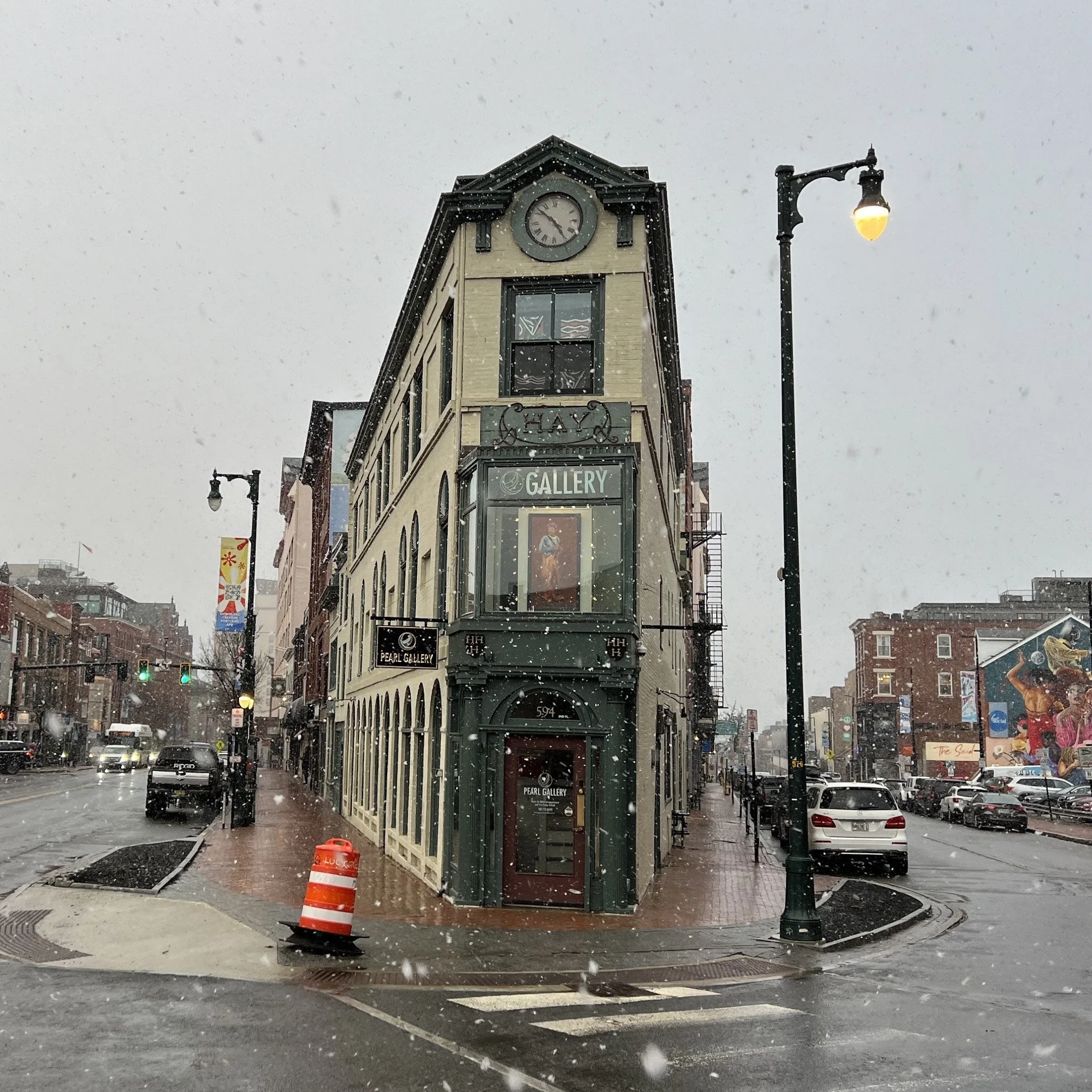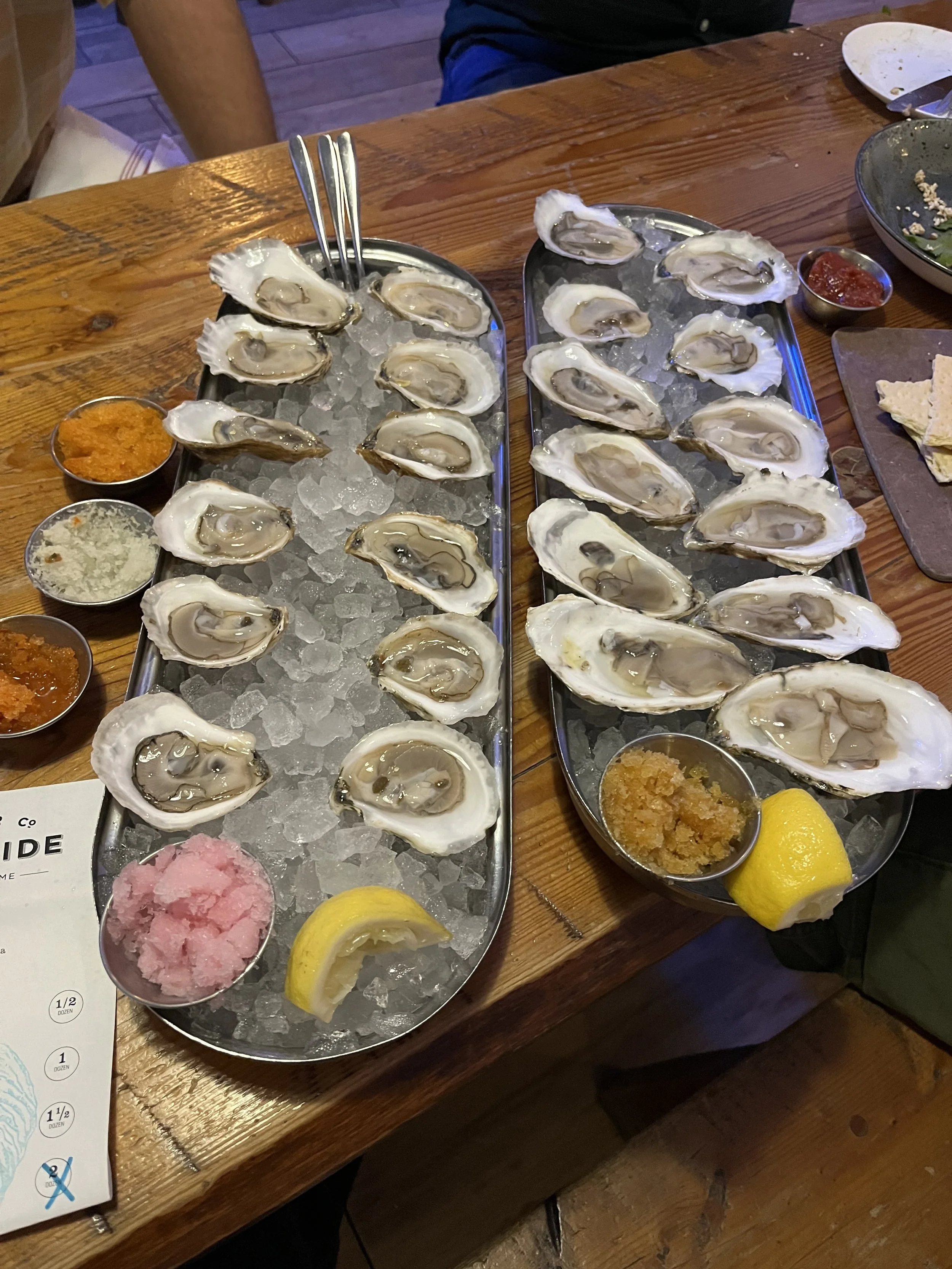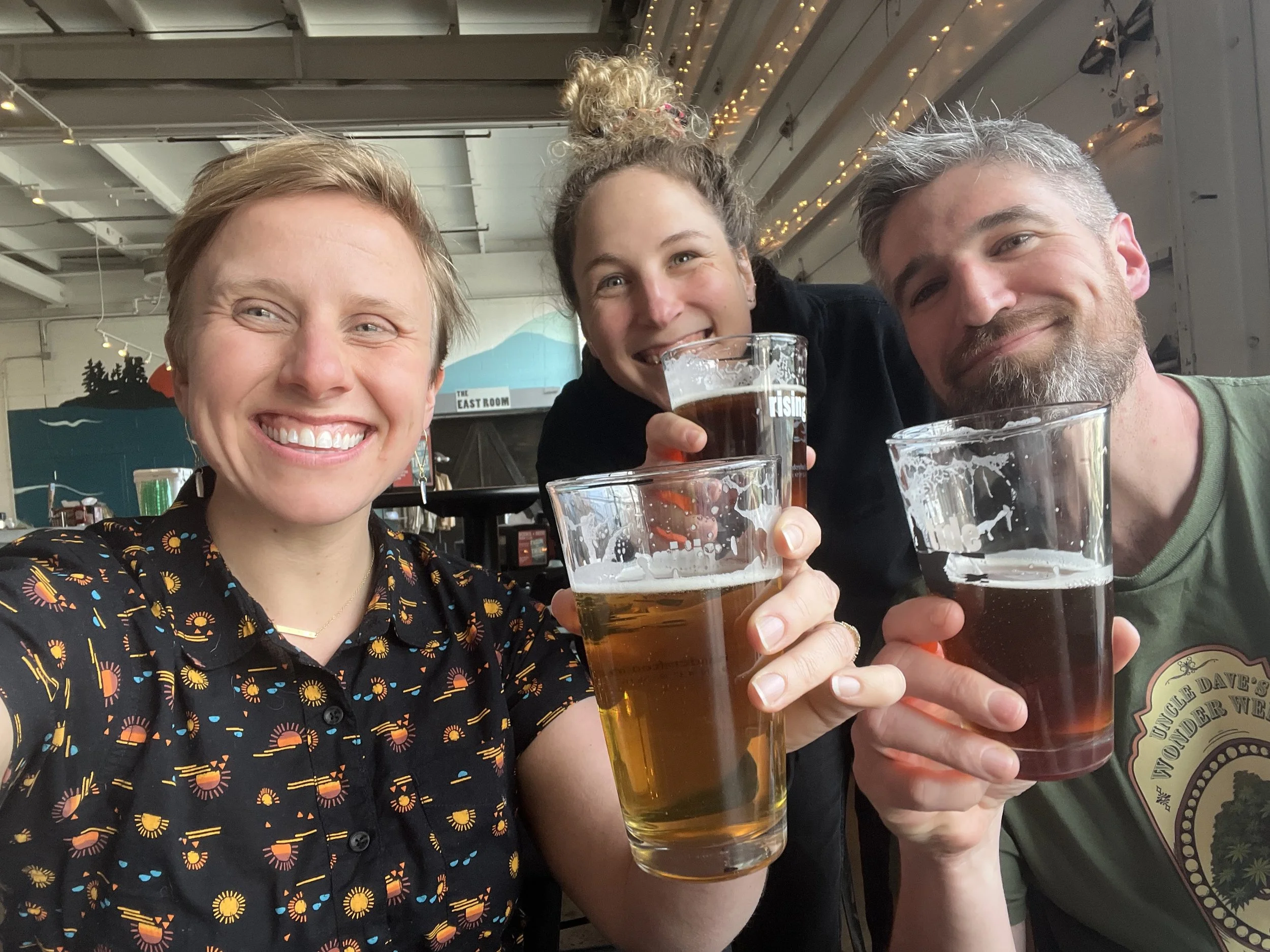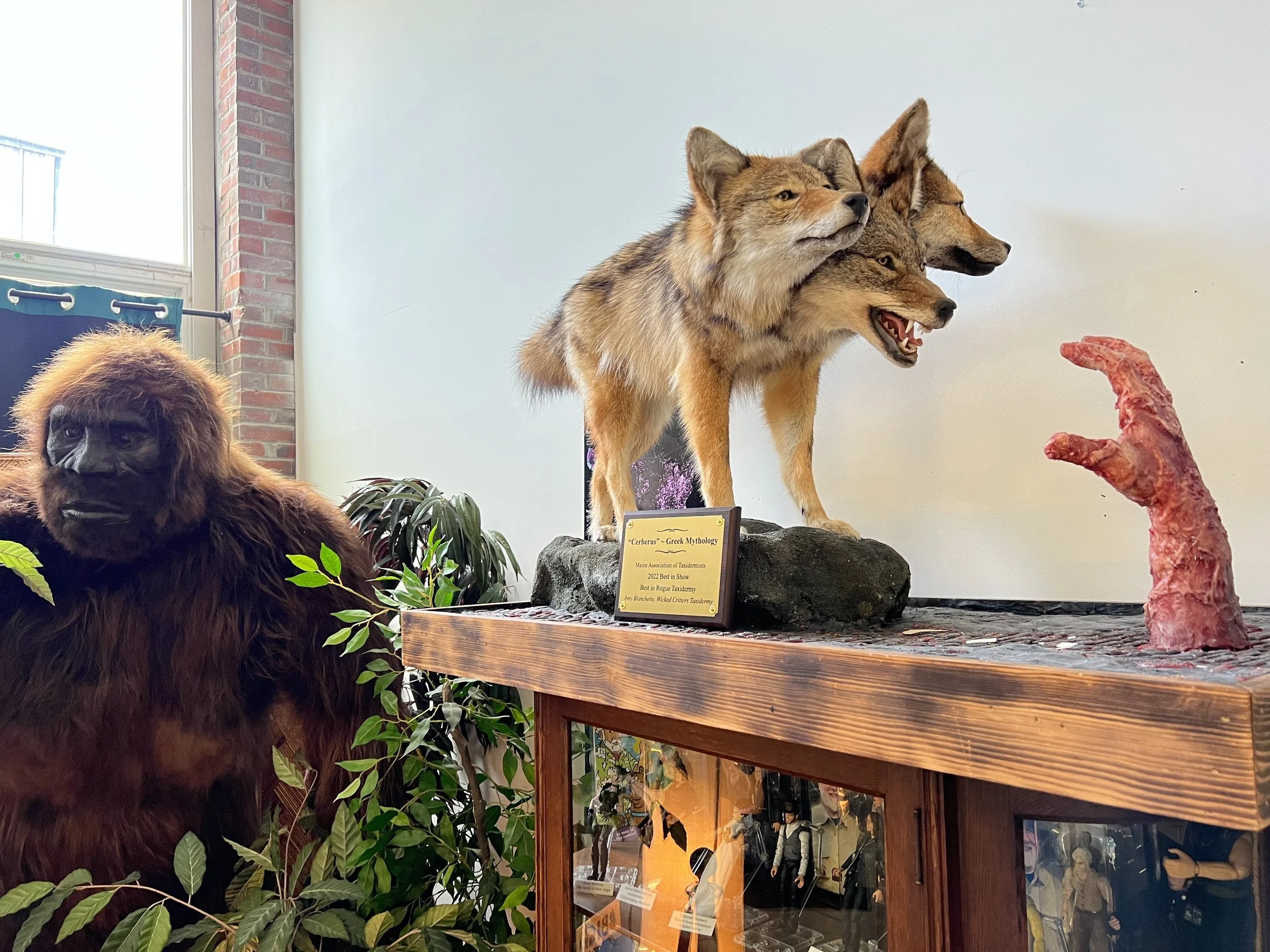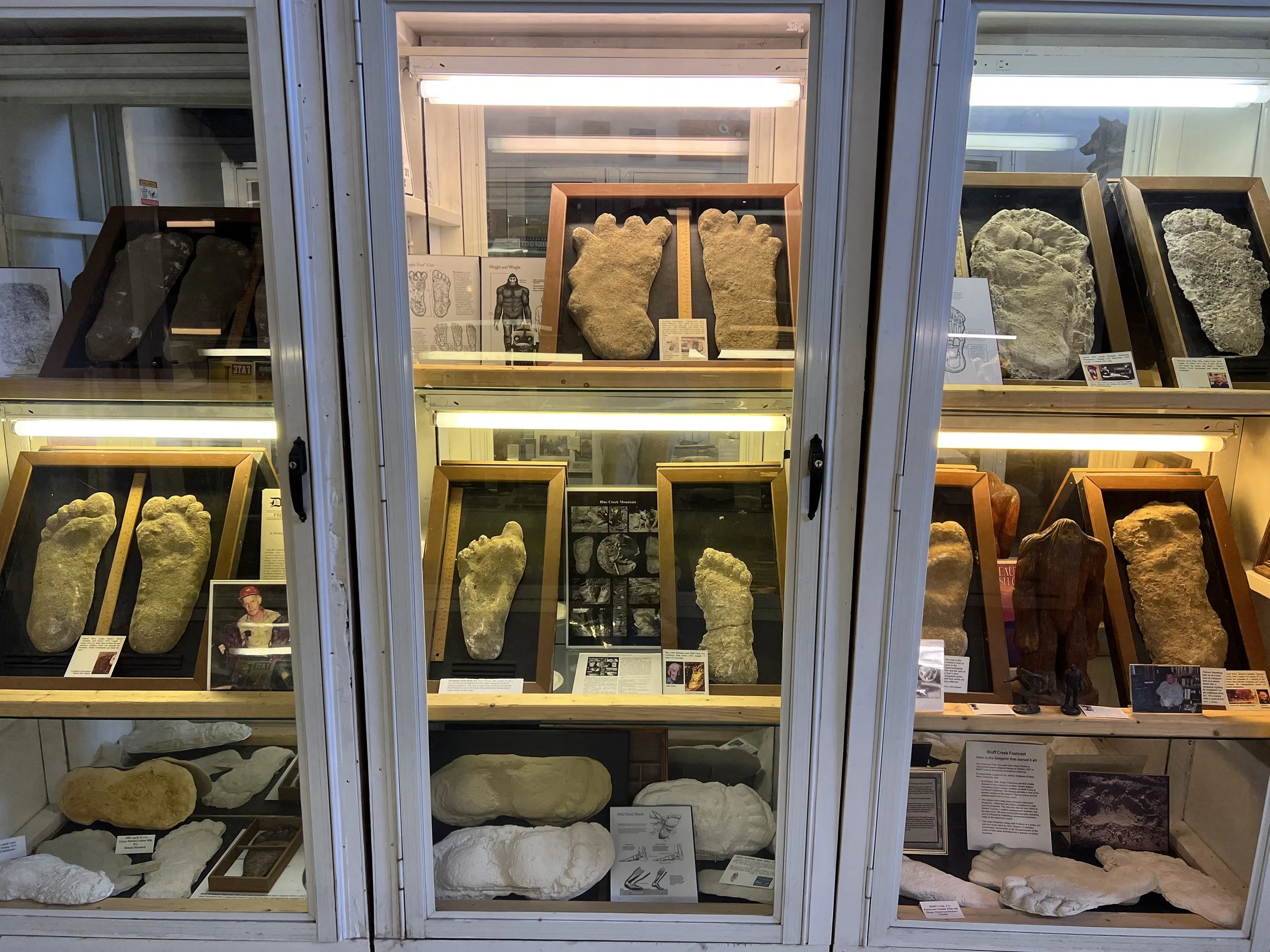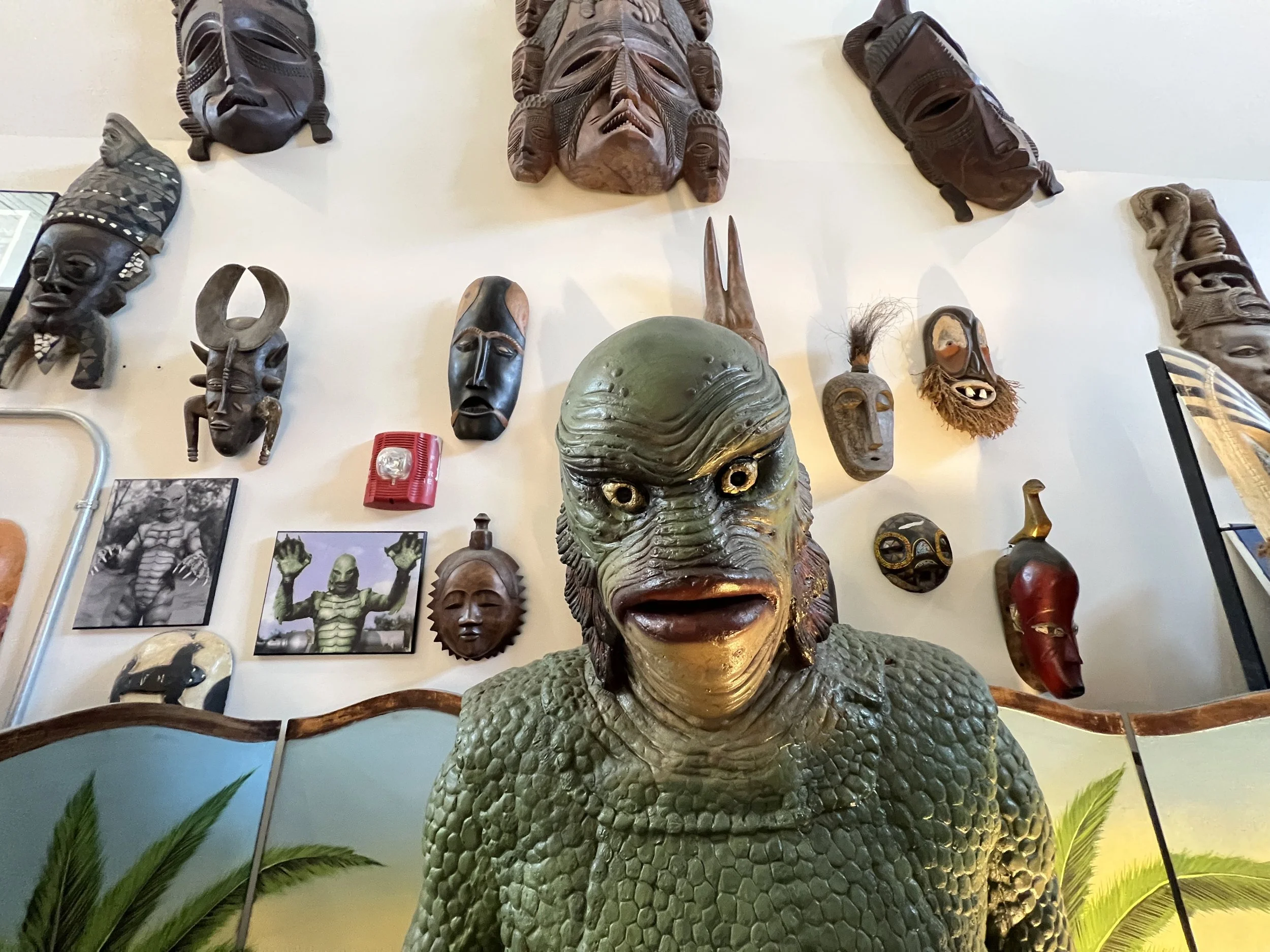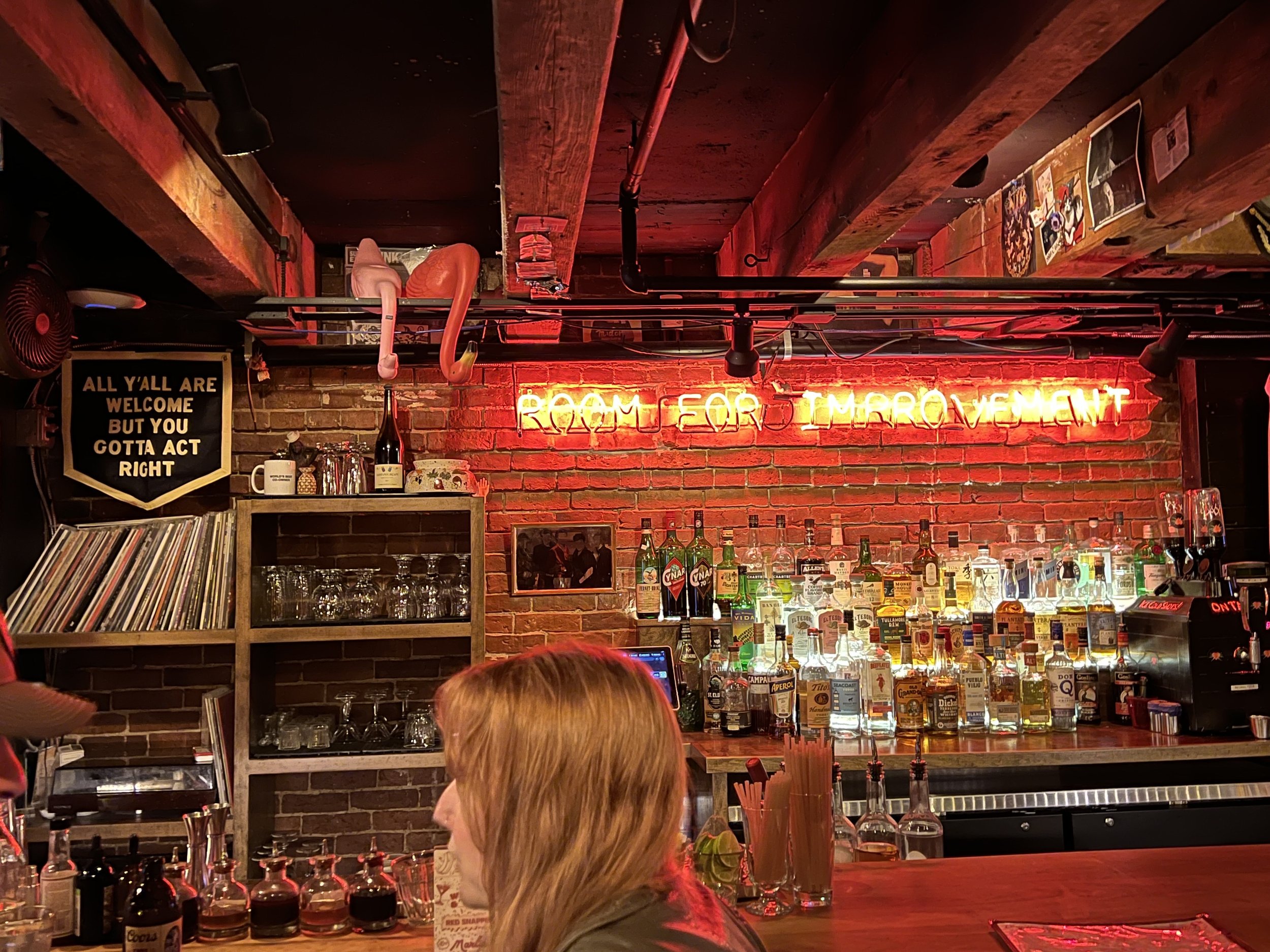
Spring 2025
Elizabeth: And then suddenly it was the middle of May. Here, where I live in Durham, North Carolina, the bright blush of early spring has deepened to a darker green and the mulberry tree in my backyard is heavy with ripe purple fruit. The cicadas have resumed their evening serenade and two nights ago I saw my first firefly. We have been blessed with another cool, damp spring. Weeks on end of 70 something weather makes the punishing heat that we know awaits us this summer feel worth it. I wrote in an email to someone overseas, “the weather forecast seems to be about the only good news coming out of the United States nowadays.”
Last month when Ellie, Will, Charlie and I traveled to Portland, ME for the Farm to Institution New England conference it felt like time traveling. There, hardly a bud or leaf to speak of, and on one of the days it snowed hard. Packing for the trip, I grumbled about having to pull out the winter coat and sweaters I had recently put to bed in a box in the basement. But when I ducked out of the conference to see the fresh falling snow, I felt only unabashed delight.
We went to Maine to host a two-hour session along with Eastern Food Hub Collaborative members exploring anti-competitive food hub networks. (Keep reading below for more on that by Will.)
We took advantage of being together to stick around Portland to have one of our quarterly in-person meetings together – where we balance out long sessions of “working on our business” with a hearty amount of wine, local food, and, per my insistence, shopping – mostly for hand-thrown ceramics.
Each season when we facilitate ourselves through these in-person get togethers, one of the first things on our agenda is always to review the cultural agreements that we laid out together back during our very first meeting as Seed Change Strategies. Together we answered:
· What do we need to work with joy, ease, and connectedness?
· What do we need to work efficiently (and how important is efficiency to us)?
· What do we need to do the kind of work together that we want to be doing? That we feel proud of?
· What do we need to make decisions effectively and collaboratively?
· What do we need to handle conflict?
Some of them are admittedly a little bit silly. (My favorite might be “We recognize that it is essential for all of us to go camping sometimes, together and separately.”) But re-reading them now, they resonate deeply. Here are a few that stood out:
· We recognize that working with ease will not be easy. Ease requires discipline, competence, autonomy, relatedness and wellbeing.
· We can’t succumb to jadedness, ennui, or any of the other symptoms of burnout. When we’re struggling to work with joy, we will call it out; and we will work together to support each other through those times.
· We will strive for fearlessness in how we work together. To get there, we acknowledge and accept that we’ll all make mistakes, miss cues, ask silly questions, miss appointments, and eat someone’s leftovers by accident. When we do, we’ll take ownership, but we won’t hold it against each other.
As we’ve grown, we’ve had to create new ways of actualizing these values. After our retreat last summer, we decided we needed to more consistently seek and receive feedback. Now, once a week, every week, we give one another applause (recognition for good work) and offers (feedback for how you might improve). Giving and receiving feedback frequently felt a little uncomfortable at first. But by practicing this consistently, we’ve built our muscle for feedback and have grown to really love and rely on this process.
If Seed Change Strategies has a canonical text, it’s Emergent Strategy by adrienne maree brown. There’s a paragraph in Emergent Strategy where brown talks about her own experience building organizational culture that I keep coming back to:
“Being a part of this team has been incredible. We have experienced what it’s like to release any assumptions that one person has to have all the skills needed to lead and support the work. That release – a huge relief to me personally – allowed us to really begin to weave together our strengths, rather than facing the limitations of relying on one leader to hold the vision, coordination, fundraising, and programmatic work of the group. It has allowed us to face our own personal limitations with transparency and curiosity, noting where we want to grow and not being afraid to ask for feedback. On the average day, it feels like a highly functional organization working for change. On the best days, it feels like the world we are trying to create, and it is marvelous.”
At a time when it feels like so much is out of our control, it’s important to remember that each of us has immense capacity to influence our relationships, communities, and organizations just by how we show up for ourselves, for each other, and for this work. As we plan for the rest of 2025 we know that we’ll have bad days, we’ll have good days, we’ll have great days – but every day, no matter what, we have each other and we have the culture and the systems we have built that ground our work in our values, our friendship, and our highest hopes for the future.
You can read our cultural agreements here and if they spark any curiosity or inspiration in you, then please reach out. We would love to hear from you and are happy to share anything that helps.
P.S. - Not yet signed-up for our newsletter? Do so here!
We solemnly swear that we’ll never share your email or spam your inbox.
What We’re Cooking Up
Wanting to brighten up your meals this spring? We’re highlighting the unsung hero of most great dishes: acidity! It's never a bad time for brightness, but after a winter of stews and braises, we're ready for the vinegar and citrus that makes flavors pop.
Will: I was a big fan of Lucky Peach magazine, and Peter Meehan’s cookbook, Lucky Peach Presents: 101 Easy Asian Recipes is an old standard in my kitchen. There’s never a bad time for Spicy Cold Celery, but the best time is just starting as early celery begins to show up at farmers markets around us.. Just don’t run out of chili crunch – and definitely try a jar of Sijang when you’re next in Richmond!
Elizabeth: Acid is almost always the secret ingredient in any good dish I make. Staples that are always in our kitchen: pickled red onions in the fridge and a little bowl of lemons and limes on the counter, and fresh tomatoes when in season. (Will, very knowingly, gifted Ellie and I some excellent balsamic vinegar for the holidays.)
Elizabeth’s Chicken Shwarma
Acidity brings not only a brightness, but also a balance to any dish. This week we’re making chicken shawarma, inspired by this hidden gem in Durham, NC. The Sam Sifton recipe I’m using for our dinners this week starts with the simple instructions to juice two lemons. Marinate skinless, boneless chicken thighs in the juice, ½ cup olive oil, and a generous blend of garlic, salt, pepper, cumin, paprika, turmeric, cinnamon and crushed red pepper - for up to 12 hours. Cook the chicken with a quartered red onion or two at 425 for about 30-40 minutes until starting to get nice and brown and crispy on the edges. We’ll be eating ours with tzatziki, cucumbers, tomato, fresh parsley, olives and pickled red onions on a bed of greens or wrapped up in fresh pita.
Ellie: Fennel Salad That I Think I Invented but Maybe Came from the Internet. I’m looking for something crunchy and bright these days to shake off the winter blues. RIP to that spaghetti squash that has been on my counter for 4 months. I’ve been making this fennel salad a lot over the last couple of weeks cause it really celebrates the acidity and crispness that I want this time of year. I’d like to take credit for inventing it so please don’t google it. Thinly slice four or five radishes, four or five stalks of celery (cut it on a sharp bias - this takes away the stringiness), and a bulb of fennel. Toast up and chop a quarter cup (ish?) of almonds and toss them in. Add chopped up parsley, dill, and/or some of the fennel fronds, and maybe some pickled shallots if you have them. Then flaky sea salt, olive oil, and a lot of lemon juice. Toss. Once it’s well combined, shave some parmesan on top, and when you think you’ve done enough, add 20 to 30% more. If you like it, tell everyone it was my idea.
Shaved vinegar ice is changing the game for New England oysters!
Charlie: I thoroughly enjoy people’s excitement over the seasonality of certain crops. For me, it’s always been muscadines at the end of summer and asparagus in the spring. To celebrate asparagus and acidity, I recommend this NYT asparagus orzo that my wife, Allison, enjoys making (and I enjoy eating). If you’re like me and don’t have a NYT subscription: 1) In salted water, boil a cup of orzo. Two minutes before the orzo is al dente, throw in one pound of fresh, thinly sliced asparagus. 2) In a big bowl, mix 1 tsp lemon zest, 3 tbsp lemon juice, 3 tbsp olive oil, and the cooked orzo and asparagus. 3) Fry up 1/2 cup panko breadcrumbs in 2 tbsp of olive oil til golden brown, mixing in 1 finely grated garlic clove and salt and pepper to taste afterwards. 4) Stir 1/4 cup finely grated parmesan into the orzo-asparagus mix and top with the toasted breadcrumbs. Add more lemon juice and parmesan as you feel so led (the more the merrier!).
What’s On The Horizon
Will here. Ever since the Northeast Farm to Institution Summit in April, I’ve been thinking a lot about “collective entrepreneurship,” an expression that I first heard at a convening of Eastern Food Hub Collaborative (EFC) members in northwestern Virginia a couple years ago. It was part of a conversation about EFC’s shared vision and strategy, and it elevated a core value at the center of our work together: instead of competing with each other, we support each other.
Some of y’all will have rolled your eyes there, and I get that. It can read a little feel-good-y. It’s work, though, I promise you. It flies in the face of most of what I came up believing was central to succeeding as a business owner: ideas like “get big, or get out,” and “dog-eat-dog,” and all the hero’s journey narratives that teach us that it’s the exceptional individual, and not the collaborating collective, that can change systems and remake the world.
The thing is - that old way of thinking isn’t working. We’re surrounded - overwhelmed - by the negative externalities of unchecked capitalism, and its devastating effects on our shared communities and natural resources. Our hyper-competitive economy perpetuates extraction and exploitation, it consolidates wealth and power, and it fails to deliver systems change. How could it? Competition is the hallmark of “business as usual.”
We went to the Summit last month to lead a workshop grounded in the question, what if we didn’t compete? We wanted to lift up the work of the EFC, as well as other collaborative food hub networks operating at state and regional levels, and explore the potential, the fears, and the lessons that food hub operators are learning as they practice collective entrepreneurship together.
We figured it might be a bit wonky for the practitioner crowd. It was a two-hour breakout session, which is a long time to be thinking anti-competitive, post-capitalist thoughts together. We figured we’d pull a few network nerds (aka our people) and hold space to talk these ideas through together.
Our panel in Portland, featuring EFC friends, Chris Hartman and McKenna Hayes.
Eighty people showed up to a room set, ambitiously, for fifty. Independent farmers and co-ops, food hubs and value chain coordinators, institutional buyers, community health organizations, funders. Young people and elders, activists and professionals, calloused hands and sport coats, so many different folks – convened around a rejection of business as usual. We talked about building trust and making decisions as a peer group; about winning, managing, and growing customers collectively; about networks of networks, and how they coordinate at different scales; and about how we talk about this work and shift mental models.
I can’t quite capture what it felt like to be in that packed, sweaty room, feeling the energy and potential of so many people working to cultivate an anti-competitive food system. But I can tell you that it felt affirming and empowering to work alongside those not rolling their eyes at the idea that we’re stronger and more resilient together; and that collective entrepreneurship feels like a new narrative, telling a success story big enough to include us all.
In Our Feels (Senior High Edition)
Whether you’ve known us for years or are new to the party, the purpose of this newsletter is to better acquaint you with us as a team and as individuals. What better way to showcase where we’re at than by showing you where we’ve been - emotionally speaking… specifically when we were in high school. Join us for this trip down memory lane as we explore some of our go-to tracks for all the teenage feels, from post-heartbreak angst to the bliss of late night cruising.
Learning Corner
Hey friends, Ellie here for a little learning inspiration! One of my favorite parts about conferences is they remind me how big and creative the movement for a just food system is. The FINE conference was chock full of people who were inspired, curious, and on the move. I kept saying to myself looking around, this is a group of people who are far from giving up. We heard a plenary panel about the way that communities and school districts in Maine are working together to better meet the needs of a school population increasingly made up of New Americans from around the world.
The Halal School Meals Network shared their work bringing Halal meals to the entire Portland School District this year, and two others in the region next year. It’s a great example of what happens when a diverse group of people bring their individual needs and assets to a shared problem. Check them out and support their work!
We also wanted to share two other cool resources we came across recently. First this report from the Common Market about creative approaches they’re taking to investment and value chain coordination, and second, these resources from Legal Food Hub that provide guidance on how to handle various kinds of federal misbehaving. Feel free to send us anything cool you’ve written or come across recently!
Fancy meeting you here! If signing up for our newsletter wasn’t a big enough testimony to your loyalty, reading this far certainly is! In exchange for your commitment, I (Charlie) give you these pictures from the International Cryptozoology Museum in Portland, ME:
This Spring, remember to be like Bigfoot and believe in yourself, even when no one else does. 🤞👣
